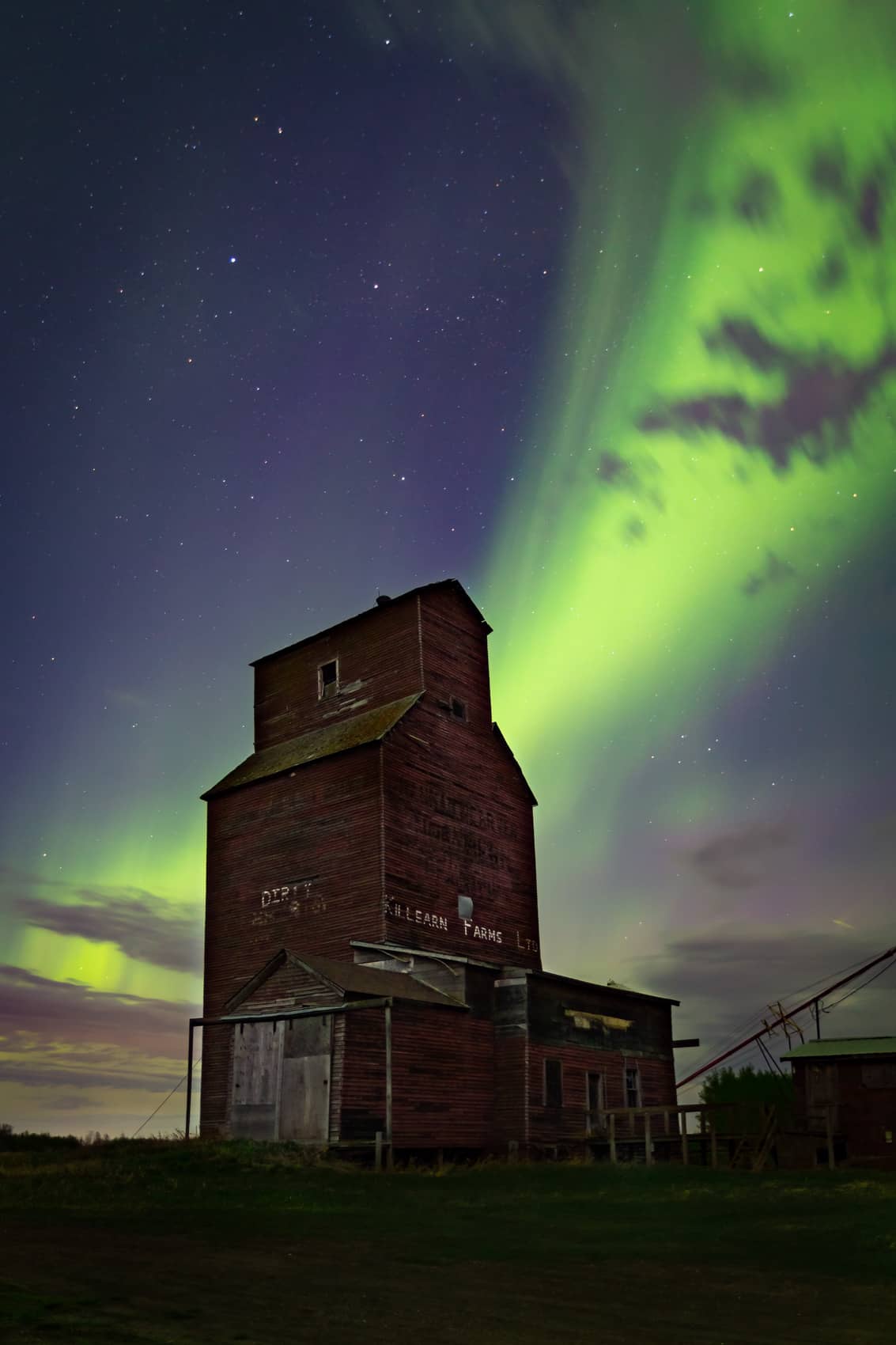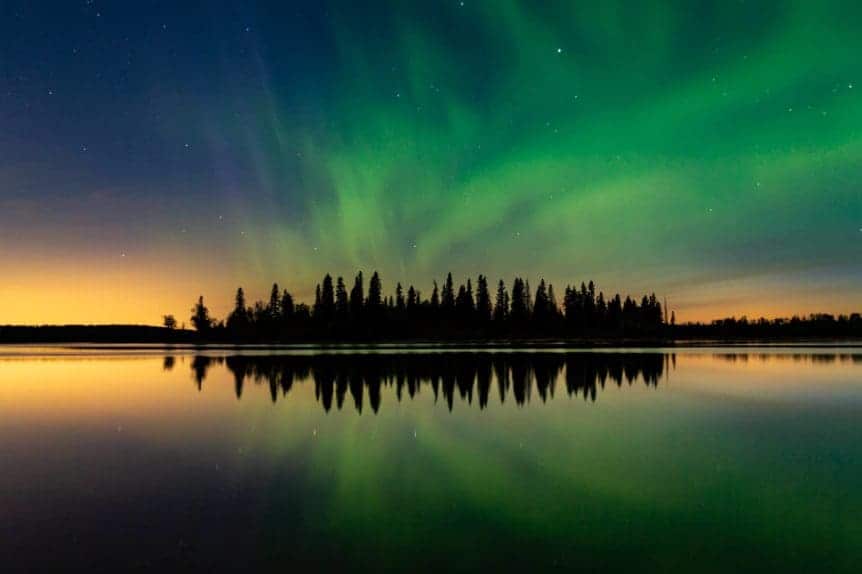On any given clear evening, the night sky is sure to impress. But throughout the year, special events occur where the sky really seems to come alive! From the northern lights, to meteor showers and rare comets, here are 5 big celestial events you should keep an eye out for!
– Photos by Shane Turgeon
Helpful Links:
Aurora
Ah, the aurora borealis! The northern lights! Truly, there is no greater spectacle in the Alberta night sky. Caused by particles from the sun interacting with the earth’s atmosphere, a strong aurora storm can make the sky come alive as ribbons of green and pink dance across the heavens. Alberta is well-positioned under the auroral oval to give us truly wonderful shows that other places at the same latitude around the world don’t get. Whether it’s your first time experiencing the wonder of the lights or your one hundredth, the aurora will always put a smile on your face and may even have you jumping up and down in excitement!

App tip: there are many different apps that claim to predict and show when the aurora will happen. But there is only one app worth having: Space Weather Live. This app is directly tied to the Deep Space Climate Observatory satellite (DSCOVR) that monitors solar wind and gives real time data. You don’t need to understand the science to understand the models. Just know that Kp4 might be time to start paying attention, Kp5 (also known as G1) will be time to get a bit excited and that KP6 and 7 (G2 and 3) have the potential to be a great show. The Alberta Aurora Chasers Facebook group is also a wonderful resource and community to learn more.
Noctilucent Clouds
Noctilucent or “night shining clouds” are the highest clouds in the earth’s atmosphere, sitting between 76,000 to 85,000m (250,000 to 280,000ft) and are only visible at higher latitudes in the weeks before and after Summer Solstice. These thin, wispy clouds appear almost as an apparition on the northern horizon about an hour after sunset and an hour before dawn, though some evenings they can be visible throughout the night. While maybe not quite as exciting as aurora, noctilucent clouds are still an absolute wonder to see and are easy to photograph even with a cell phone.
Eclipses
There are two types of eclipses: solar and lunar. Solar eclipses are when the moon passes between the sun and the earth, effectively turning the sun into a black disc in the sky and turning day into night. Total solar eclipses are rare events in North America. Parts of Canada and the US will experience one on April 8th, 2024 and then not again until 2033. Far more common are lunar eclipses, when the earth passes between the sun and the moon, and total lunar eclipses are often referred to as a Blood Moon. Lunar eclipses are wonderful events and make for a great reason to get out under the stars (which become more and more visible as the eclipse progresses).
Pro tip: https://www.timeanddate.com/eclipse/ is a great website to find out when the next eclipse will be happening in your area.
Meteor Showers
Meteor showers occur when the earth passes through streams of cosmic debris particles which burn up as they enter our atmosphere. There are over 20 annual meteor showers a year but only a handful are worth putting in any great effort to catch. The Perseids, which peak August 11th through 13th, truly are the best overall shower of the year not just because of the amount of meteors one may see in an hour but because nothing beats the comfort of viewing a shower over a warm summer evening. The Orionids, the Leonids and the Geminids round out the other top showers of the year and run October through December. Note the names of the showers: they indicate which constellation in the sky that the meteors appear to radiate from.

Comets
Great visitors from the outer reaches of our solar system, comets are icy balls of frozen gas that eccentrically orbit the sun. Some may pass through every few decades and some may take thousands or even millions of years to return but any time a comet becomes “naked-eye visible” is a time for excitement. While some naked-eye comets may only appear as a very faint smudge that are better seen by not looking directly at it, others become as visible as bright stars. As the comet approaches the sun it begins to thaw, releasing gasses which create their bright, distinctive coma and tails. These “Great Comets” have captured our ancestor’s attention for thousands of years. Though not listed as a Great Comet, Comet Neowise, which appeared in our skies in 2020, was a bright, naked-eye comet that appeared during the first year of the pandemic, bringing a sense of excitement and hope to many night sky viewers in an otherwise awful time.
—
About the Author: In 1986, when he was 8 years old, Shane Turgeon stood with his dad on his back porch and tried (unsuccessfully) to find Halley’s Comet as it passed through our solar neighbourhood. Though it would take another nine years for him to see his first naked-eye comet when Hale-Bopp passed through, those evenings staring at the stars with his dad, looking for Halley’s, sparked something inside him. Shane is now an award-winning landscape photographer with a keen interest in astrophotography. Visit his website at www.shaneturgeonphotography.com and follow him on Instagram @shane_turgeon


